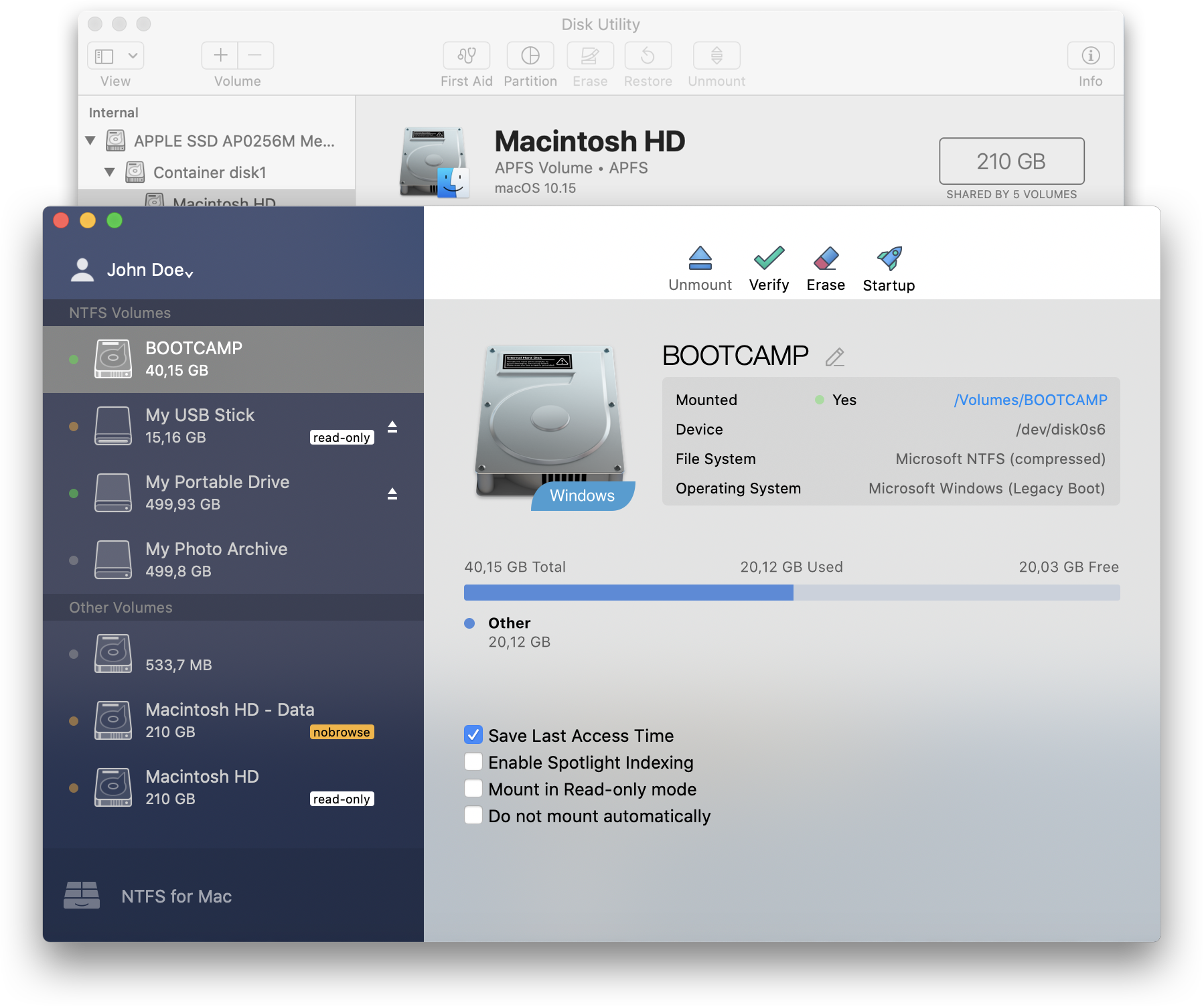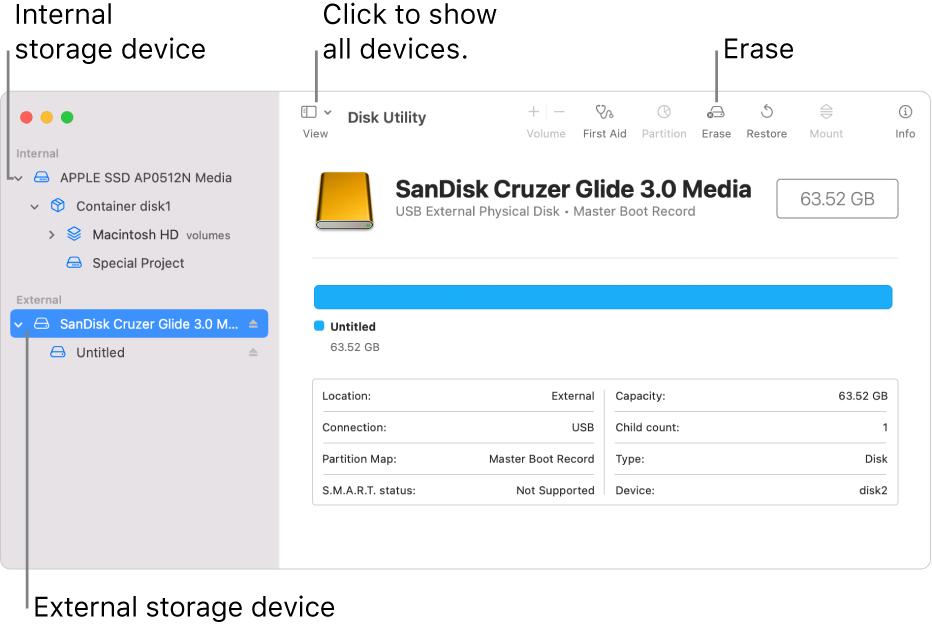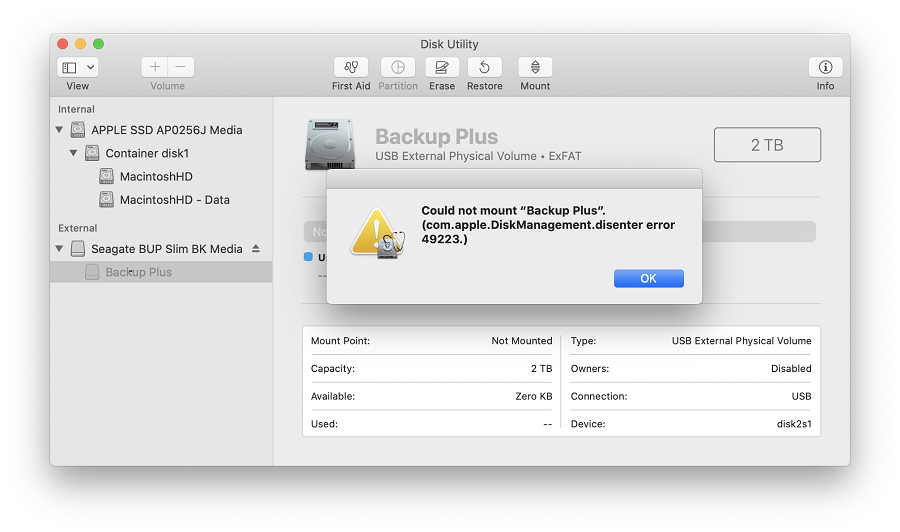

- Mac os disk utility windows how to#
- Mac os disk utility windows for mac#
- Mac os disk utility windows install#
- Mac os disk utility windows software#
Read More.Īpart from recovering data, Stellar Data Recovery Premium for Mac helps you repair your corrupt photos and videos. Connect the recovery drive to your non-booting Mac and access your data. In such a case, use a working Mac to run the activated software, then create a recovery USB drive. In case your Macintosh HD is severely corrupt or inaccessible, your Mac won’t boot.
Mac os disk utility windows software#
Activate the software with complete assurance as it has a 30-day money-back guarantee. *Trial version of Stellar Data Recovery Premium for Mac allows free scan and preview but needs activation to recover data. Navigate to the save location to check all your recovered data. Specify a different drive location, then click Save. Step 4) Preview the scanned files, select the required ones, then click Recover. Step 3) From the “ Select Location” screen, select the non-startup APFS or HFS partition, toggle on Deep Scan, and then click Scan.
Mac os disk utility windows install#
Step 1) Download and install the *trial version of Stellar Data Recovery Premium for Mac on your MacBook Pro/Air, iMac, or Mac mini.


In such a scenario, you need to recover your data using a data recovery software for Mac. When your non-startup Mac APFS or HFS volume is severely corrupt or inaccessible, you won’t be able to back up its data as you would typically do. Recover Failing or Irreparable Partition Data by Using Software Next, erase the drive and reinstall macOS. Step 3) When the repair is unsuccessful, recover data from the drive using a data recovery software for Mac (as explained next). Next, click Run to initiate the repair process. From the sidebar of Disk Utility, select Macintosh HD the startup disk, then click the First Aid tab. Step 2) From macOS Utilities, select Disk Utility, then click Continue. Your Mac will boot into macOS Recovery mode. Step 1) Start or restart your Mac, then immediately press and hold Command + R keys release the keys when the Apple logo appears. To repair “Macintosh HD,” the partition that stores your macOS, perform the following steps: Backup as much data as possible and erase this drive.” Read More: APFS Data Recovery For instance, “Disk Utility fails to repair the startup disk. Step 3) If Disk Utility can’t repair the partition, it suggests the next action course.

Disk Utility will analyze the partition and repair any logical errors. From the top pane, click the First Aid tab, then click Run. Step 2) Select an APFS or HFS partition from the left pane of the Disk Utility window. Double-click the Disk Utility icon to launch it on your Mac. Or else, navigate to Finder > Applications > Utilities > Disk Utility. Step 1) Press Command + Space Bar to launch Spotlight, and then type ‘disk utility’ and press Return. To fix your APFS or HFS partition using Disk Utility, do the following: You can also use it to repair your logically damaged APFS or HFS partition. You must be using Disk Utility in your system to perform disk management tasks. Repair Damaged APFS or HFS Partition by Using Disk Utility
Mac os disk utility windows how to#
The next section describes how to fix an APFS or HFS+ partition. If your APFS or HFS partition is not functioning properly due to aging or usage, repair the partition immediately to avoid data loss. Many users, these days, are upgrading their macOS and moving to APFS to be on par with the current technology. In case your Mac is running on macOS Sierra or OS X Lion, the internal drive partition may be in the HFS+ format. If you are using macOS Big Sur, Catalina, or Mojave, then most likely, your internal storage drive is partitioned in APFS format.


 0 kommentar(er)
0 kommentar(er)
